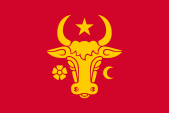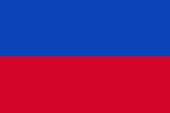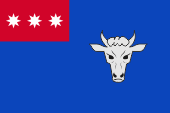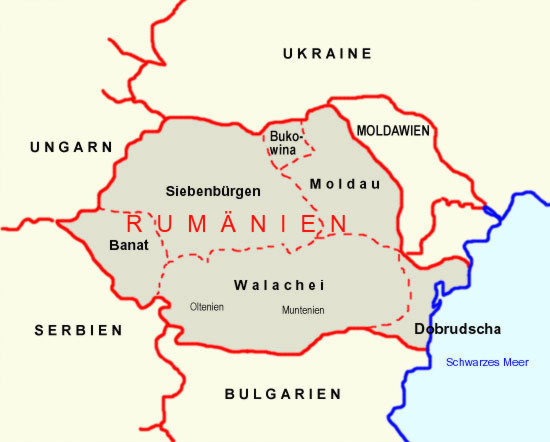mobile View, to the German Version tap the flag


- Principality of Moldavia
- former state and today historical Region in Romania
- own name: Principatul Moldovei
• Flags
• Meaning/Origin of the Flag
• Coat of Arms
• Meaning/Origin of the Coat of Arms
• Map
• Numbers and Facts
• History
• Origin of the Country's Name

14th–15th cent.,
Flag of the Principality of Moldavia,
Source, by:
Flags of the World,
Wikipedia (EN)




18th/19th cent.,
Country's colours of the Principality of Moldavia,
also reversed in color,
Source, by:
Flags of the World,
Die Welt der Flaggen




1858–1861,
National flag,
Source, by:
Flags of the World




As colours of the country of Moldavia were used blua and red. Those are obviously not derived from the coat of arms. The traditional yellow-red of the coat of arms was probably replaced by the combination red-blue in the 18th century. The reasons for this are not known. Finally, in the first half of the 19th century, Sultan Mahmud II awarded the Moldavian troops red-blue pennants → red-blue instead of blue-red. This is always significant when it is asked for the origin of the colours of the Romanian flag. The Romanian colours blue, yellow and red were created during the revolution of 1848/1849 by combining the colours of the Principality of Wallachia and the Principality of Moldavia, namely yellow/blue and red/blue. However, it seems that blue, yellow and red had already been used in Wallachia, and the official name of the Principality of Wallachia "Principatul Tării Românesti" also showed the use of the Romanian term. However, in 1861, the state of Romania was created by the union of these two principalities.
Source:
Flags of the World,
Wikipedia (EN),
Volker Preuß


Coat of arms of Moldavia,
Source:
Flags of the World,
Wikipedia (EN)

The coat of arms of Moldavia showed initially a golden bull's head on red ground. But it often appeared quite changeable, so the aurochs head was also silver on red or even black on red. Even white blazons with an ecru-coloured bull's head are known. After 1856 – the year of the earning of the Northern Dobruja – the coat of arms was escorted by two stylized dolphins. They are (in gold on blue) the arms animals of the Dobruja.
Source:
Wikipedia (EN),
World Statesmen,
Volker Preuß

The historical Regions in Romania:

Source:
Volker Preuß

Area: 14.759 square miles
Inhabitants: 1.832.106 inh. (1899)
Capital: Jassy (Rom.: Iasi), 78.067 inh. (1899)
Languages: Moldavian Romanian
Currencyen: Moldavian Gros, Taler, Piastre, Lei, since ca. 1860 Romanian Currency
Time Zone: GMT + 2 h
Source:
Wikipedia (EN),
Meyers Großes Konversationslexikon

ca. 2000 B.C. · evolution of the nation of the Thrakians in Dakia (today’s Siebenburgen)
7th century B.C. · foundation of greek colonies at the coast of the Black Sea
4th to 6th century · Great Transmigration ("Migration Period"), because of the expansion of the Huns in the Middle Asia Region whole nations became pushed to west, the Huns push the Slavs and that the Germanic tribes, the Germanic tribes switch over to the area of the Roman Empire
6th century · immigration of Slavs
7th century · out of the remaining Dako-Romans arises the Nation of the Dako-Romanesques, expansion in direction of the today’s Walachia and Moldavia
9th to 13th century · invasions of the Petsheneges, Kumans and Tatars
13th century · ein Volk der Rumänen wird erstmals urkundlich erwähnt
1359 · establishment of the Principality of Moldavia between the Carpathia Mountains and Dnjestr River during the battles against the Tatars
1387 · dependence from Poland-Lithuania
1400 · initial Turkish (Ottoman Empire) attacks against Moldavia and Walachia
1455 · the Principality of Moldavia has to pay tribute to the Ottoman Empire (Turkey)
1461 · Prince Stephan III. of Moldavia (the Great, ca. 1435–1504) earns Wallachia
1475 · revolt of the Principality of Moldavia under Prince Stephan the Great, triumph over the Turks, restoration of the independence of Moldavia and Walachia
1497 · Prince Stephan the Great triumphs over Hungary and Poland, preservation of the independence of Moldavia
1511 · Moldavia becomes annexed by the Ottoman Empire under limited interior autonomy
1600 · Michael the Brave, Prince of Walachia, becomes Prince of Moldavia
19th of August 1601 · Michael the Brave becomes murdered, Walachia and Moldavia have to recognize ultimately the Turkish supremacy
1711 · the Turks triumph over the Moldavian-Russian liberation armies, the Princes of Walachia and Moldavia become dismissed and substituted by Greek proconsuls (Phanariots)
since 1774 · again increase of the Russian influence
1775 · ceding of the Buchenland (Bukovina) to Austria
1806–1812 · Russian-Turkish War
1812 · Peace of Bukarest, the eastern part of the Romanian Principality of Moldavia (between the rivers Prut and Dnjestr) come under the name Bessarabia (today's Republic of Moldova [Moldavia]) to Russia
1821 · great Anti-Turkish revolt in Walachia under Tudor Vladimirescu, greek national uprising in Greece, the rule of the Phanariots becomes terminated by the Ottoman Empire
1828–1829 · Russian-Turkish War, defeat of Turkey, Russia establishes a kind of a protectorate üver Moldavia and Walachia, but the Turkish supremacy consist furtherly
1848–1849 · civil-democratic revolution in Moldavia, Siebenburgen and Walachia, the revolution in Moldavia becomes suppressed by Turkish and Russian troops
1856/58 · Crimean War, Treaties of Paris, the Russian protectorate becomes substituted by a protectorate of seven European states, Moldavia earns the Northern Dobruja
1859 · Colonel Alexandru Ioan Cuza becomes elected to the Prince of Walachia and Moldavia
1861 · Prince Ioan Cuza proclaims the Principality of Romania by unification of Walachia and Moldavia
Source:
Atlas zur Geschichte,
Wikipedia (EN),
World Statesmen,
Meyers Großes Konversationslexikon

The name Moldavia (Moldova, Moldau) has its roots in the name of the in the Northeast of Romania situated Moldova River (Moldau). It was the name-patron for the historic Principality of Moldavia. The Turks called the country "Kara Bogdan".
Source: Volker Preuß


![]()







